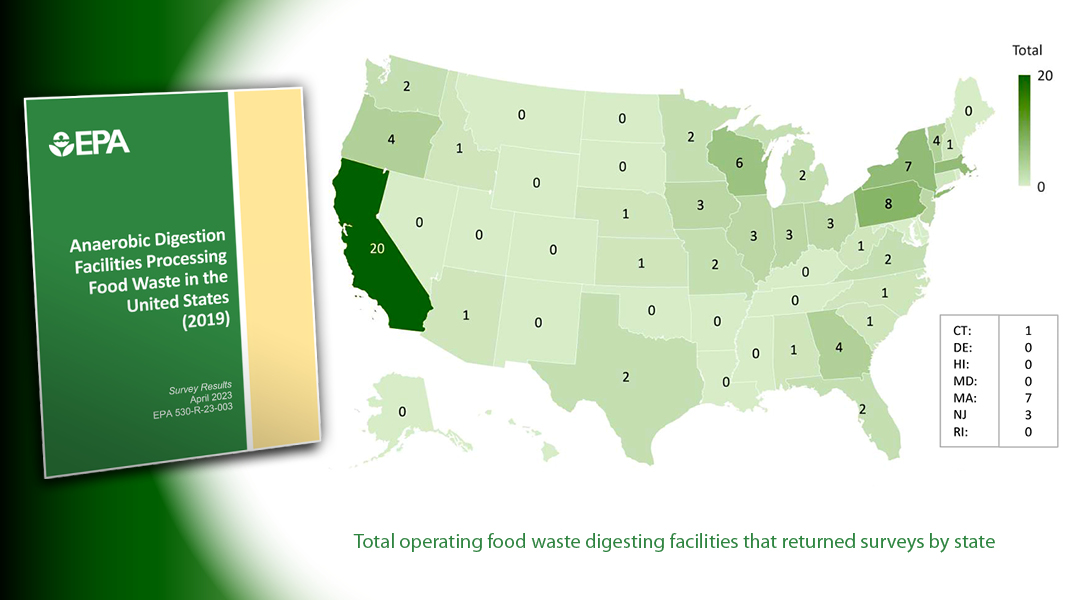Top: Graphic courtesy U.S. EPA
The U.S. EPA’s Sustainable Materials Management Division released the findings of its survey conducted in 2021 of operators of anaerobic digestion (AD) facilities that accept food waste in the U.S. The data is from calendar year 2019 and includes these “critical data points”: Processing capacity; amount of food waste and nonfood waste processed; feedstock types and sources; amount of biogas produced; and tipping fees. The remaining data points reflect circumstances in 2021 and include preprocessing/depackaging, operational specifications, biogas uses, gas cleaning systems, and solid and liquid digestate uses. The information collected was voluntarily submitted by 99 survey respondents, notes EPA. A total of 275 AD facilities that process food waste were on EPA’S outreach list, including 68 stand-alone food waste digesters (taking food waste only), 79 on-farm digesters, and 128 codigestion systems at water resource recovery facilities (WRRFs).
The following total amounts were calculated by EPA using data submitted for all three digester types in 2019:
- Processing capacity — over 42.7 million tons of food waste
- Food waste processed — over 17.5 million tons
- Nonfood waste processed (e.g., dairy manure, wastewater solids) — around 945,000 tons
- Biogas produced — 29,877 standard cubic feet per minute (SCFM), equivalent to 93 megawatts (MW) of installed capacity, or 693 million kilowatt-hours (kWh) of electricity generated/year
When aggregated, the top five food-based feedstock types accepted by anaerobic digesters in the U.S. in 2019 were (in order): beverage processing industry waste; fats, oils, and greases (FOG); food processing industry waste; other (not specified); and source separated organics. Geographic distribution of the 2021 survey responses shows that 30 states have at least one operating digester accepting food waste. California has the greatest number (20), followed by Pennsylvania (8). Massachusetts (7), New York (7) and Wisconsin (6) round out the top five. The other 25 states have four or fewer digesters that accept food waste.
In the Executive Summary of Anaerobic Digestion Facilities Processing Food Waste in the United States (2019), EPA says the “noteworthy takeaway is that capacity utilization appears to have stayed constant since 2017. This could indicate the potential to accept more feedstock at digesters, therefore maximizing capacity utilization and generating more biogas. However, various factors may impact the potential for certain digesters to process additional food-based feedstocks, such as quantities of nonfood feedstocks processed, including manure at on-farm digesters and wastewater solids at WRRFs; accessibility of food-based feedstock (e.g., proximity to the digester); preprocessing technologies; and optimal mix of feedstocks for efficient digestion.”













